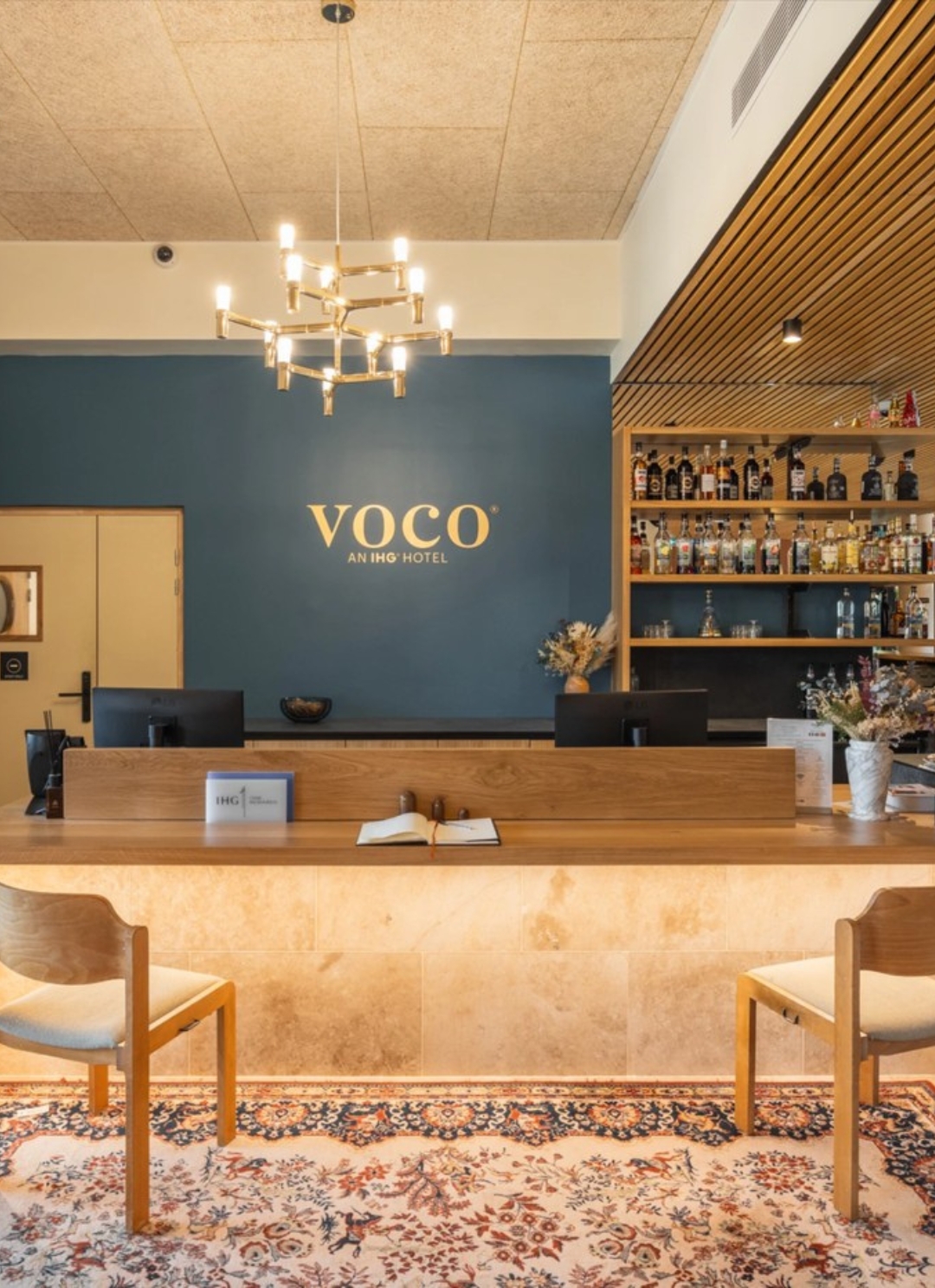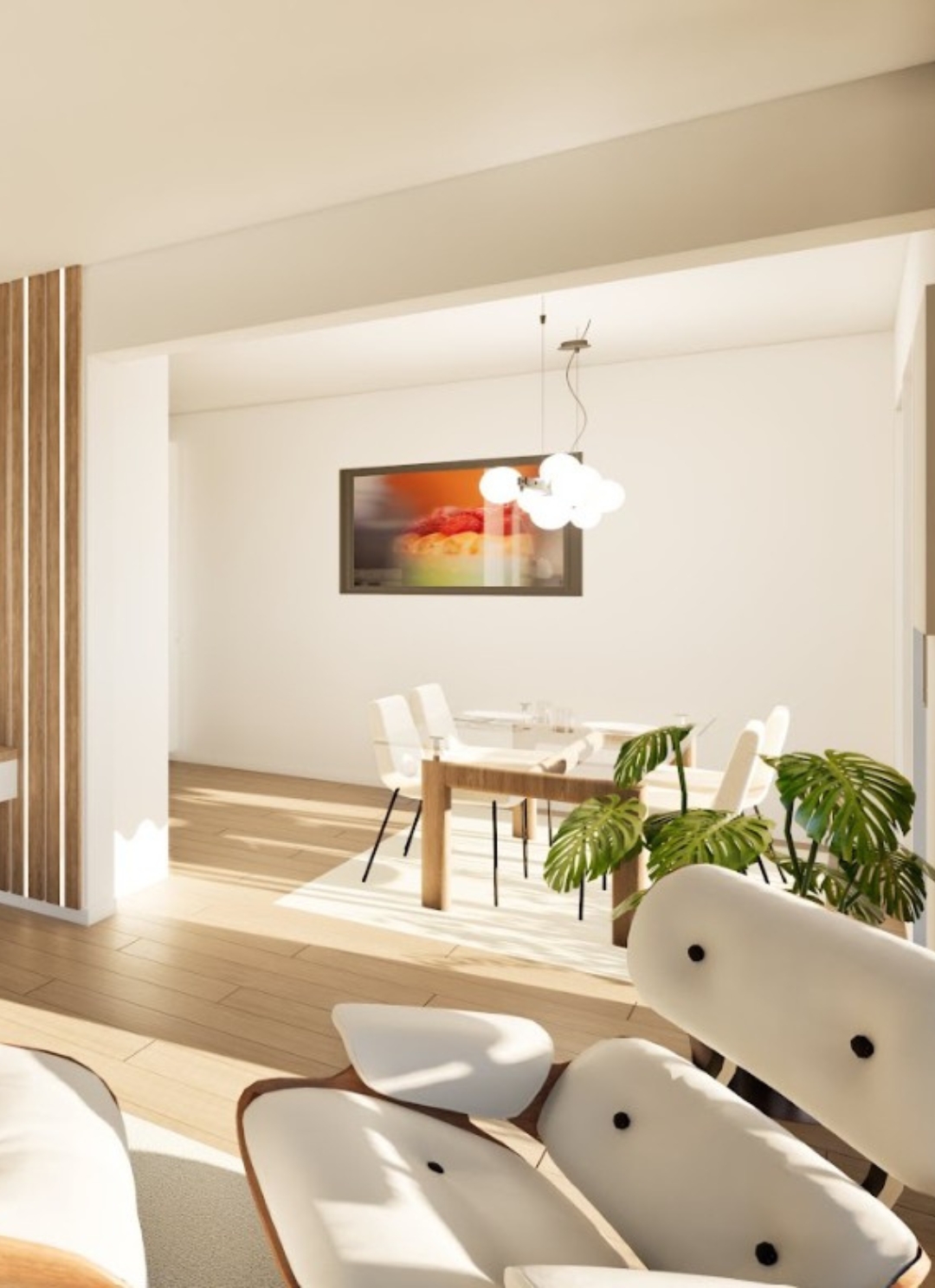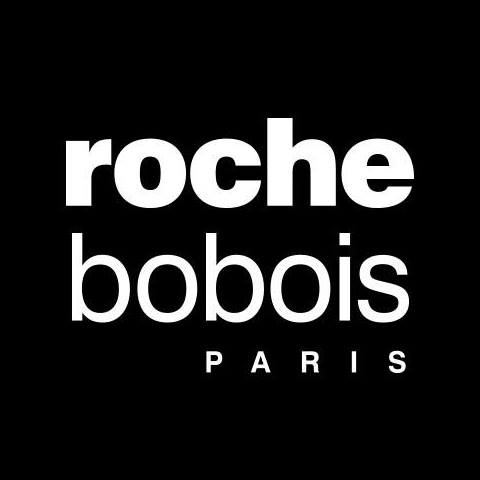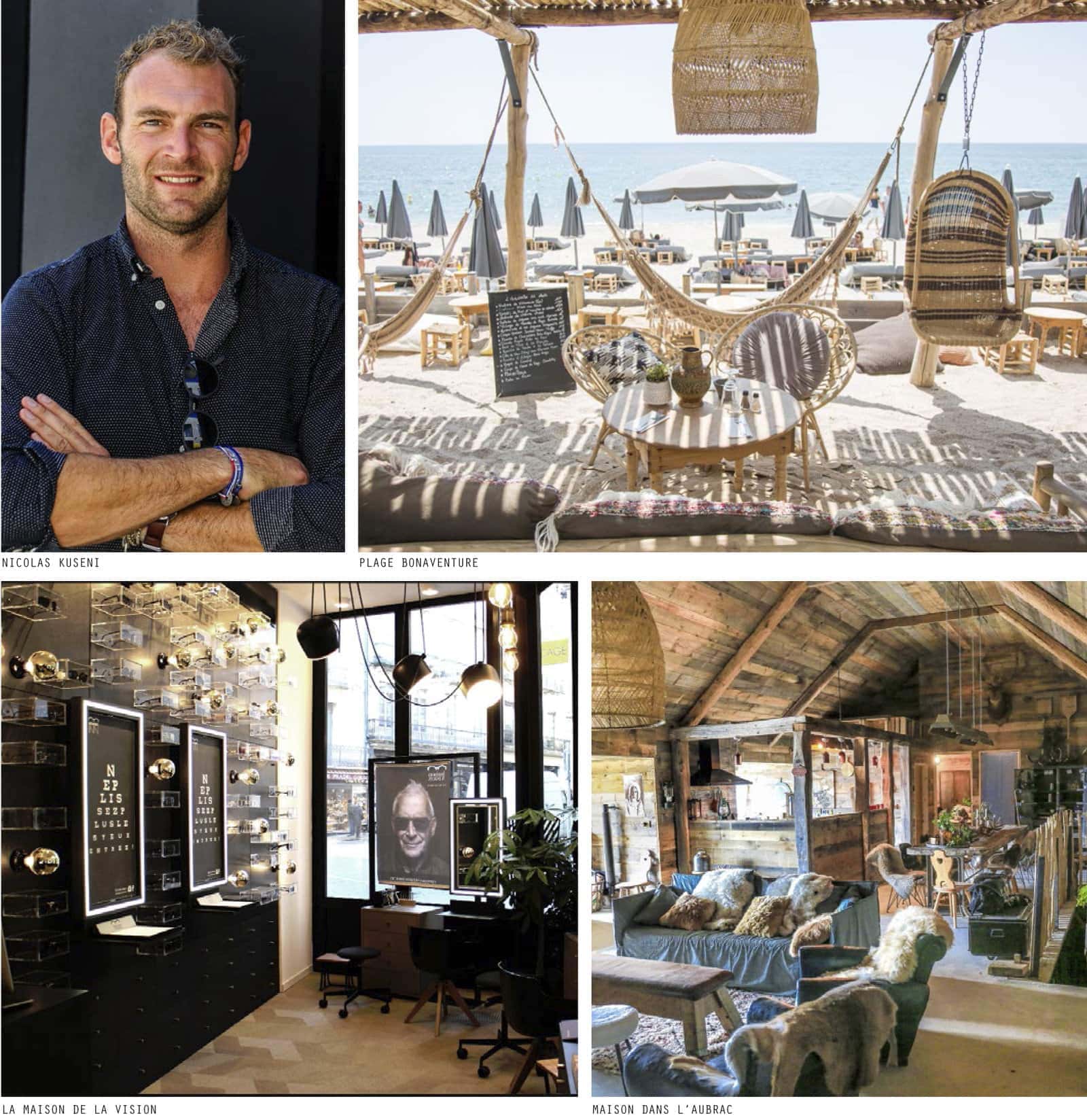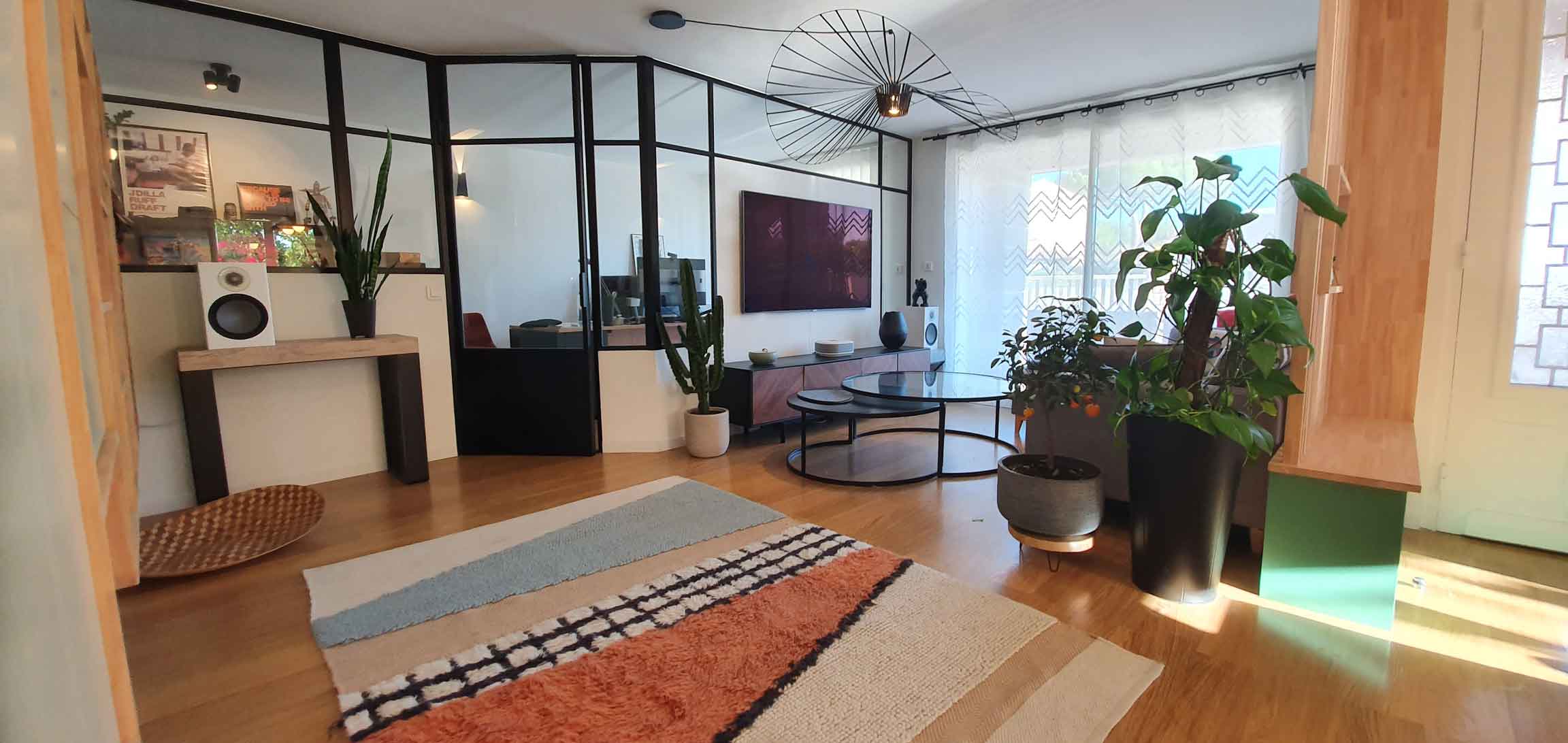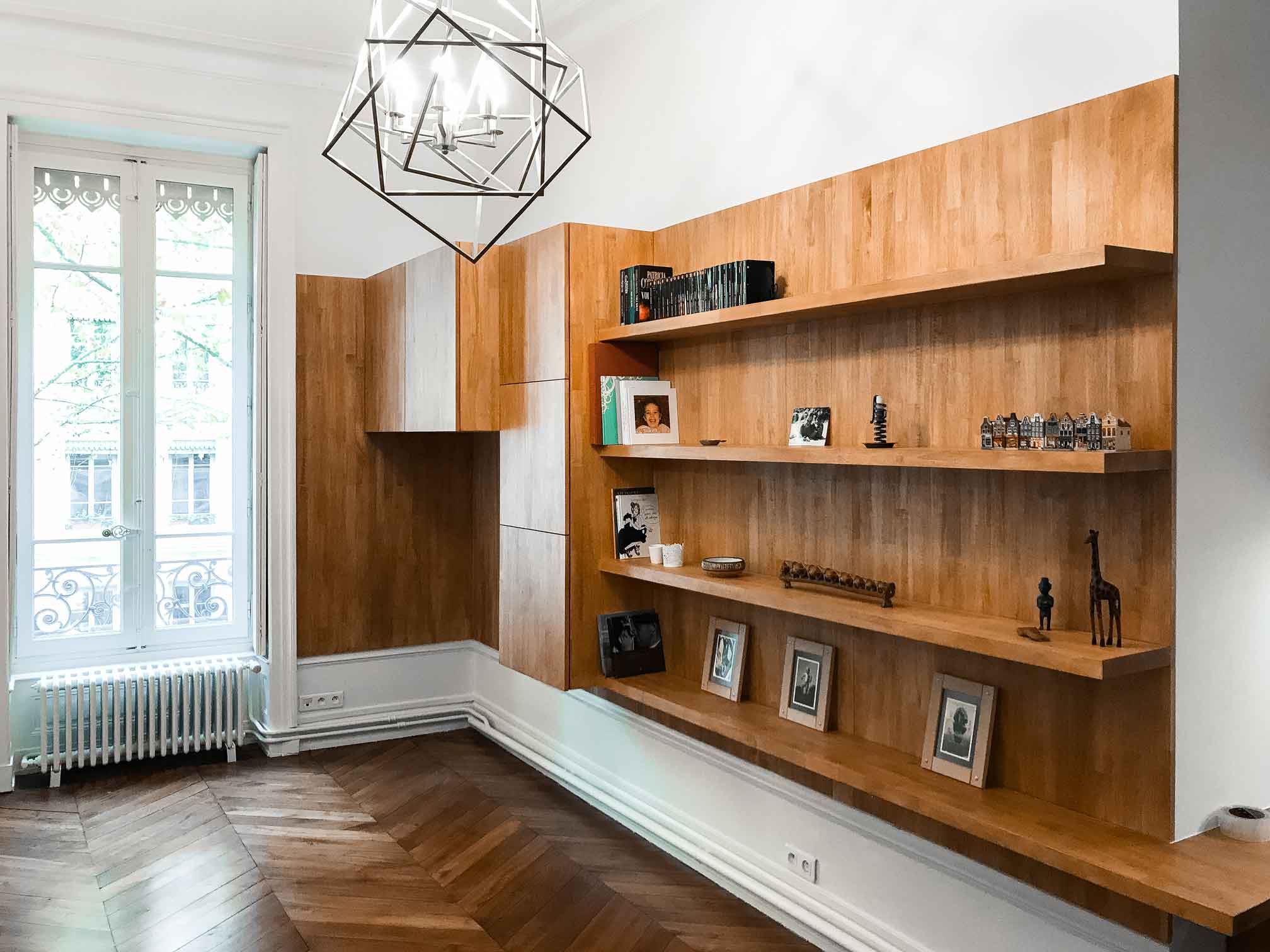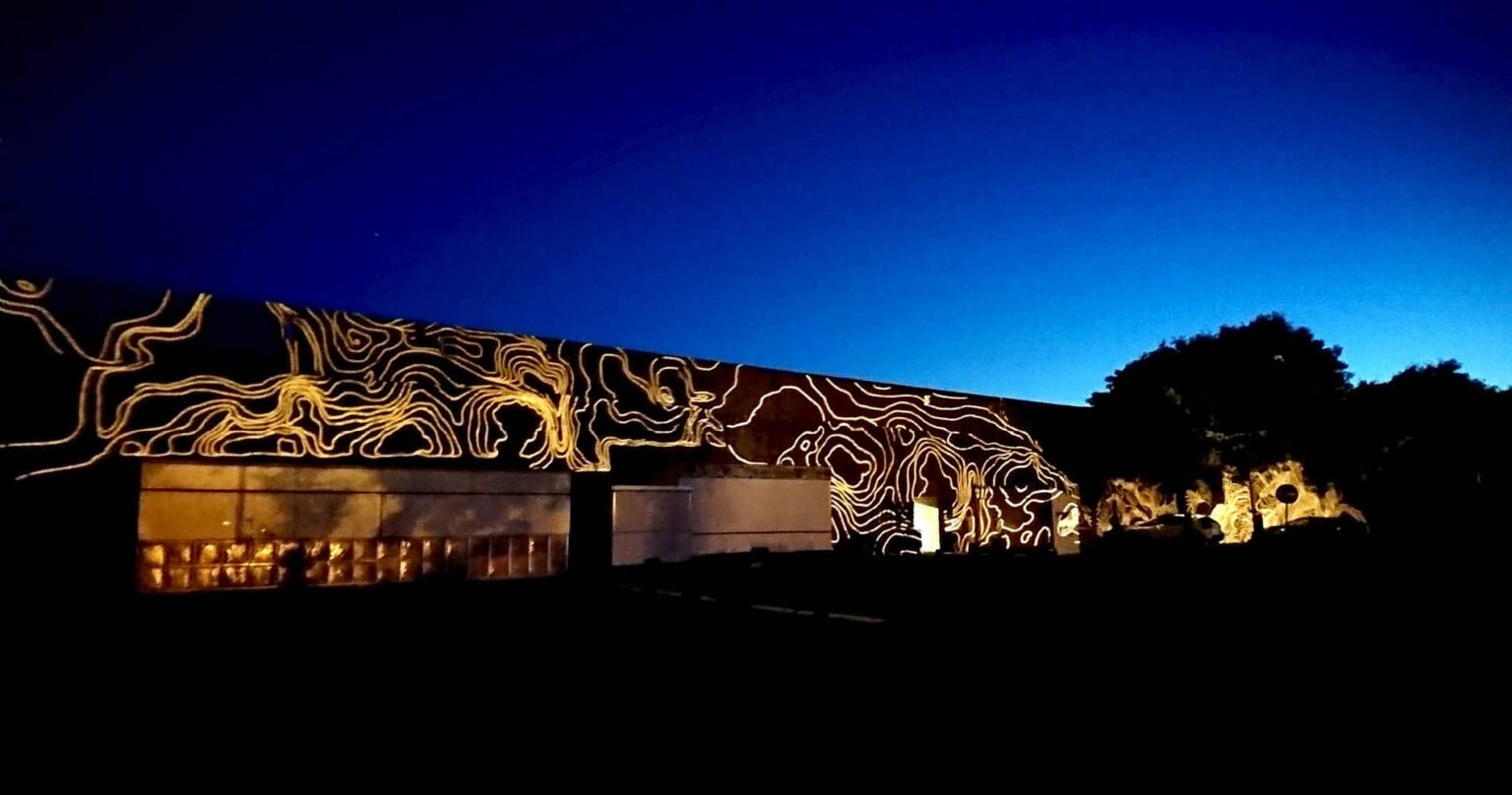
-
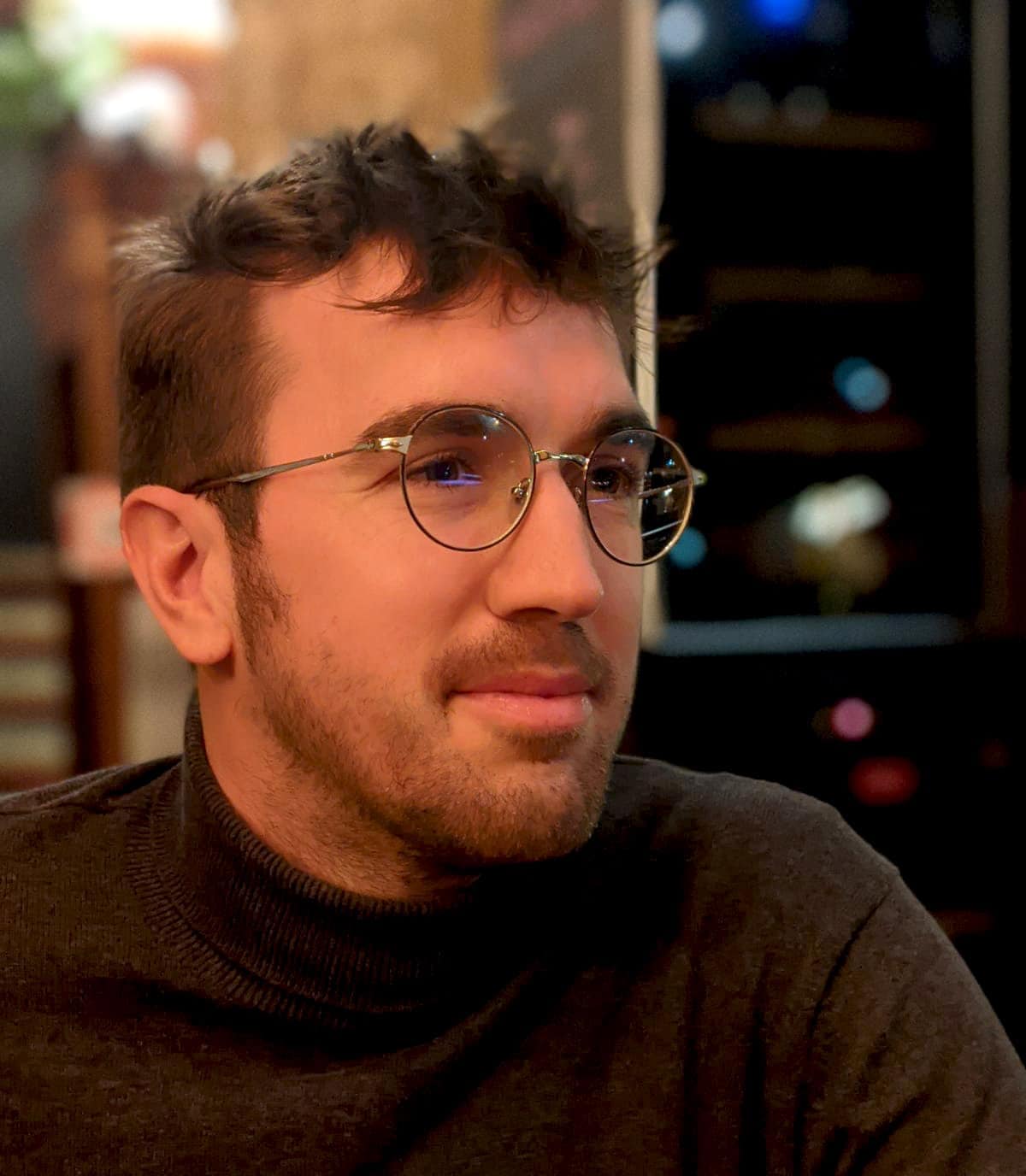
- Promotion 2011
- Training Interior Architecture
- position Doctor in nocturnal urban planning, founder of the Observatoire de la nuit (Night Observatory)
As well as teaching the basics of design, the preparatory year is also there to help students decide on their future career choice, thanks to the multidisciplinary nature of its teaching. This is how Nicolas Houel discovered his passion for the Space Design section. Doctorate, teaching and the study of light - a rich and fascinating career path. Discover his portrait.
A look back at your ESMA years
WHAT DREW YOU TO THE WORLD OF SPACE DESIGN?
Initially, I was more interested in the world of visual communication. From the age of 14 or 15, I started to learn about image retouching and graphic design tools, mainly via forums. At the same time, I was following a scientific curriculum that didn’t suit me. Once I’d passed my baccalaureate, I went for a university degree, which I soon abandoned in favour of a creative education, which I started with the MANAA at ESMA Montpellier in 2009. It was during this MANAA that I discovered space design and decided to focus my career on it.
WHY DID YOU CHOOSE TO STUDY AT ESMA?
ESMA, alongside the BTS (editor’s note: the BTS have been replaced by Bachelors), also offers training in 3D animation of excellence. Knowing that I was just discovering art education and that I loved digital representation tools, I thought I might go into 3D cinema training. From then on, ESMA was the best environment for me to study in.
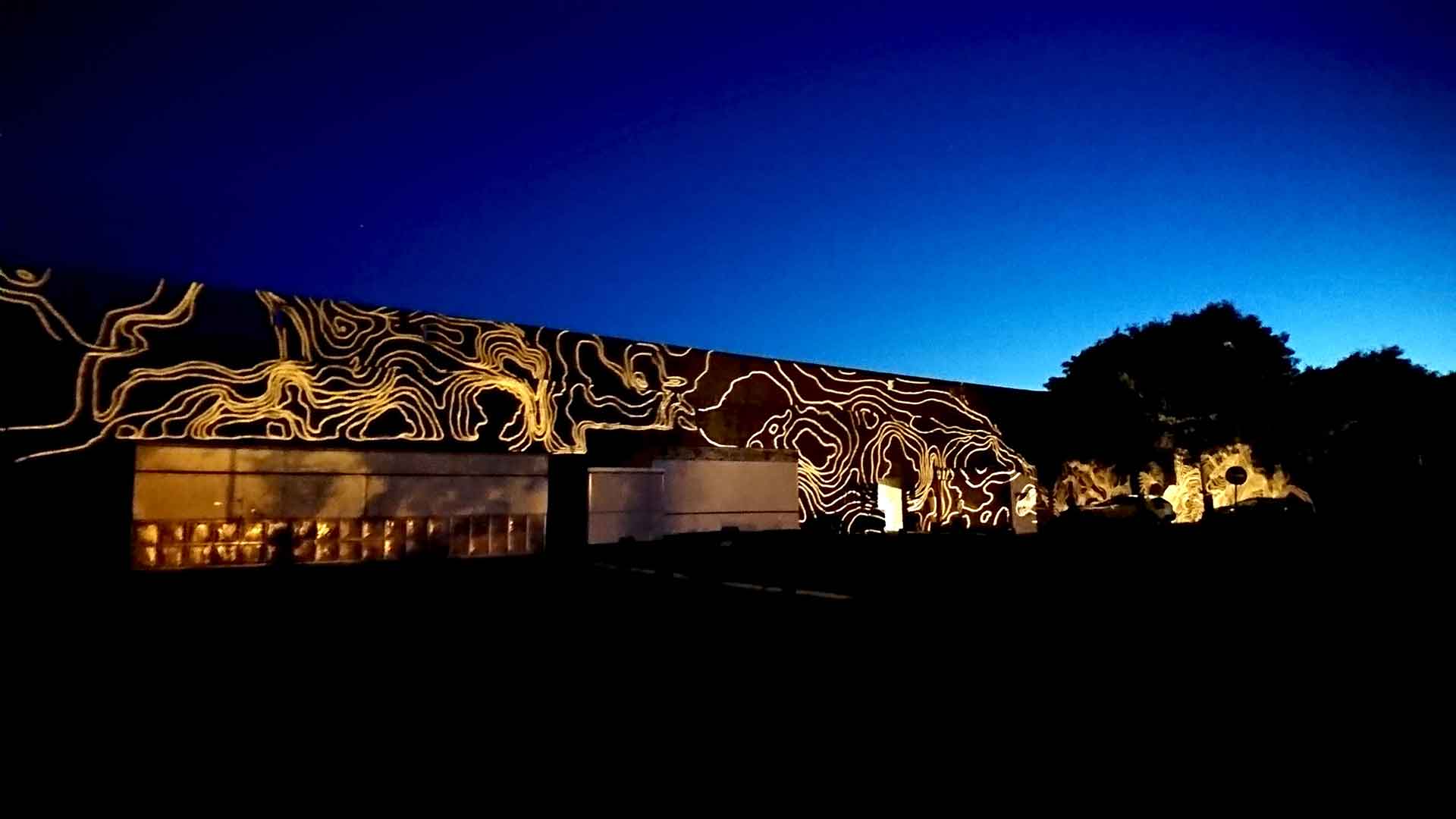
Illuminating the ramparts of Port-Louis (56) – Photo credit: Nicolas Houel & Léa le Thoër
WHAT HAS YOUR TRAINING BROUGHT YOU?
ESMA gave me the determination I needed for my career. I arrived with no artistic skills and no knowledge of this world, which I knew nothing about. I simply brought with me my creative intuitions. I still remember Laurent Soen’s classes in the MANAA: ‘Who’s ever done perspective? I didn’t even understand the question!
With ESMA, I started to create a tailor-made academic and professional pathway, which I’m still nurturing today. Of course, ESMA opened me up to the knowledge and skills I’d come to expect in the art world: art history, the practice of different media, conceptualisation and representation of projects, etc. But there was also the teaching staff, who made me feel at home.
But there was also this solid and supportive teaching team behind me, who gave me confidence and were always very generous in their support, advice and promotion. The fundamental contribution that ESMA has made to my career is the feeling of sharing common values with teachers and practitioners, of walking in a world of passionate people who are delighted to pass on their knowledge and to support up-and-coming professionals.
WAS THERE A SUBJECT YOU PARTICULARLY LIKED?
It’s hard to say. Project studio, art history, French lessons? Anything that came close to a form of expression. Let’s just say that these three subjects responded to each other, fed off each other and fuelled the creative elements of the project. What’s more, these three subjects brought with them new knowledge and discoveries all the time, so it was definitely stimulating!
WHEN YOU LEFT THE COURSE, DID YOU HAVE A CLEAR IDEA OF WHAT YOU WANTED TO DO?
To continue! To go further, to continue to build on what these 3 years (MANAA + BTS) had given me a glimpse of. So I decided to go to architecture school. I was accepted at Nantes on the basis of my portfolio in 2011, and I’m aiming to get my State Diploma in Architecture in 2015 and my Doctorate in Town Planning in 2020.
Your career path
CAN YOU TELL US ABOUT YOUR PROFESSION AND YOUR CAREER PATH SINCE YOU OBTAINED YOUR DEGREE?
I now have a doctorate in urban planning, with a specialism in the teaching of low light levels. During architecture school, I was able to take an interest in the uses of artificial lighting, by creating, among other things, a night-time show in the menhirs of Carnac, called Skedanoz. When I finished my architecture studies, I set up my own business as a lighting designer, while at the same time teaching at ESMA in Nantes.
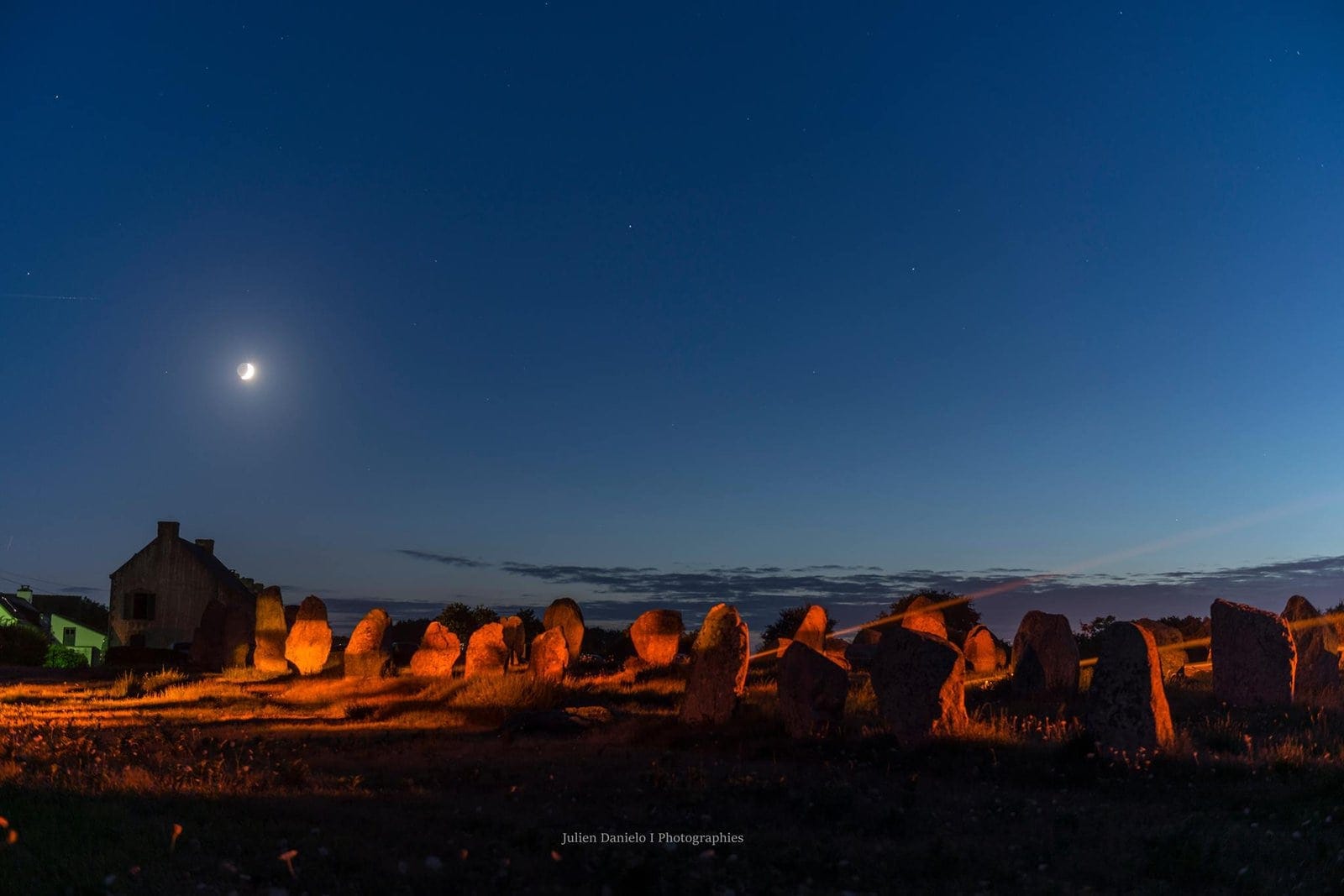
Skedanoz 2017, Carnac (56). Photo credit: Julien Danielo
In 2017 Laurent Lescop, my master’s professor, offered me a unique opportunity: to do a doctoral thesis on the development of the future Schéma de Cohérence d’Aménagement Lumière of Nantes Métropole, in the form of a CIFRE contract with the city’s lighting department. Just like the 3 years I spent at ESMA Montpellier, the 3 years I spent doing my thesis were of vital importance in my career.
It was there that I developed the theoretical and methodological approach that I was looking for, and that I now offer in all my activities: teaching; advising local authorities, associations and private companies; scientific research focused on lighting sobriety and the place of darkness in our daily lives and cultures. My work encompasses architectural illumination projects, landscape scenography and public lighting projects and, with a more forward-looking approach, helping public and private lighting managers to improve their lighting systems.
I’m somewhere between a lighting designer and a dark designer, with a clear preference for opening up to the positive cognitive experiences of darkness. When it comes to the latter, the focus is resolutely cross-disciplinary: psychology, physiology, philosophy, etc., it is one of the essential and indispensable dimensions of everyday life, yet one that is currently being sidelined by the omnipresence of artificial lighting. And yet, when darkness is accessible, it has many virtues.
YOU’VE WORKED FOR SEVERAL COMPANIES, WHAT HAVE YOU GAINED FROM THIS?
During my school career, I did a number of work placements in structures of different sizes and with a variety of activities. Some architecture firms focused on public facilities, others more on private clients. These experiences simply provide an insight into what it might be like to work as an employee or even as the manager of a structure, on a larger or smaller scale. They are a very good way of getting to grips with professional conditions and help to focus aspirations, which are crucial when it comes to making decisions later on. That’s what the work placements I’ve done have been for: to get as complete a picture as possible of the activities available in my field of study, to help me decide which path to take.
YOUR CAREER PATH HAS SHOWN AN INTEREST IN SCENOGRAPHY. WHY THIS CHOICE? WHAT MAKES IT SPECIAL?
There’s something new about imagining space, especially at night. It’s certainly the realisation of a personal imagination, offered to the audience. I’m thinking in particular of the shows designed for the alignments of menhirs at Carnac. They include both the personal experience and the experience of those who attend. From my point of view, this is where my interest in scenography lies: in the modelling of a space-time that offers access to new or renewed knowledge and perceptions of an environment, of a specific context.
To continue with the example of the menhirs at Carnac, night-time allows us to contextualise them visually, taking advantage of the darkness to highlight the iconic elements of the landscape and leaving certain architectural and urban objects that are not part of the show to the benefit of the darkness. There is also, perhaps as a priority, the storytelling of the landscape. First through the light, then through the music, and finally through the narrative.
We’re taking advantage of the nocturnal atmosphere and its cultural representations to create a framework conducive to the transmission of archaeological, historical, theological or even legendary knowledge of our heritage. In this way, the nocturnal space-time becomes a privileged place for the development of a form of pedagogy similar to that of storytelling evenings.
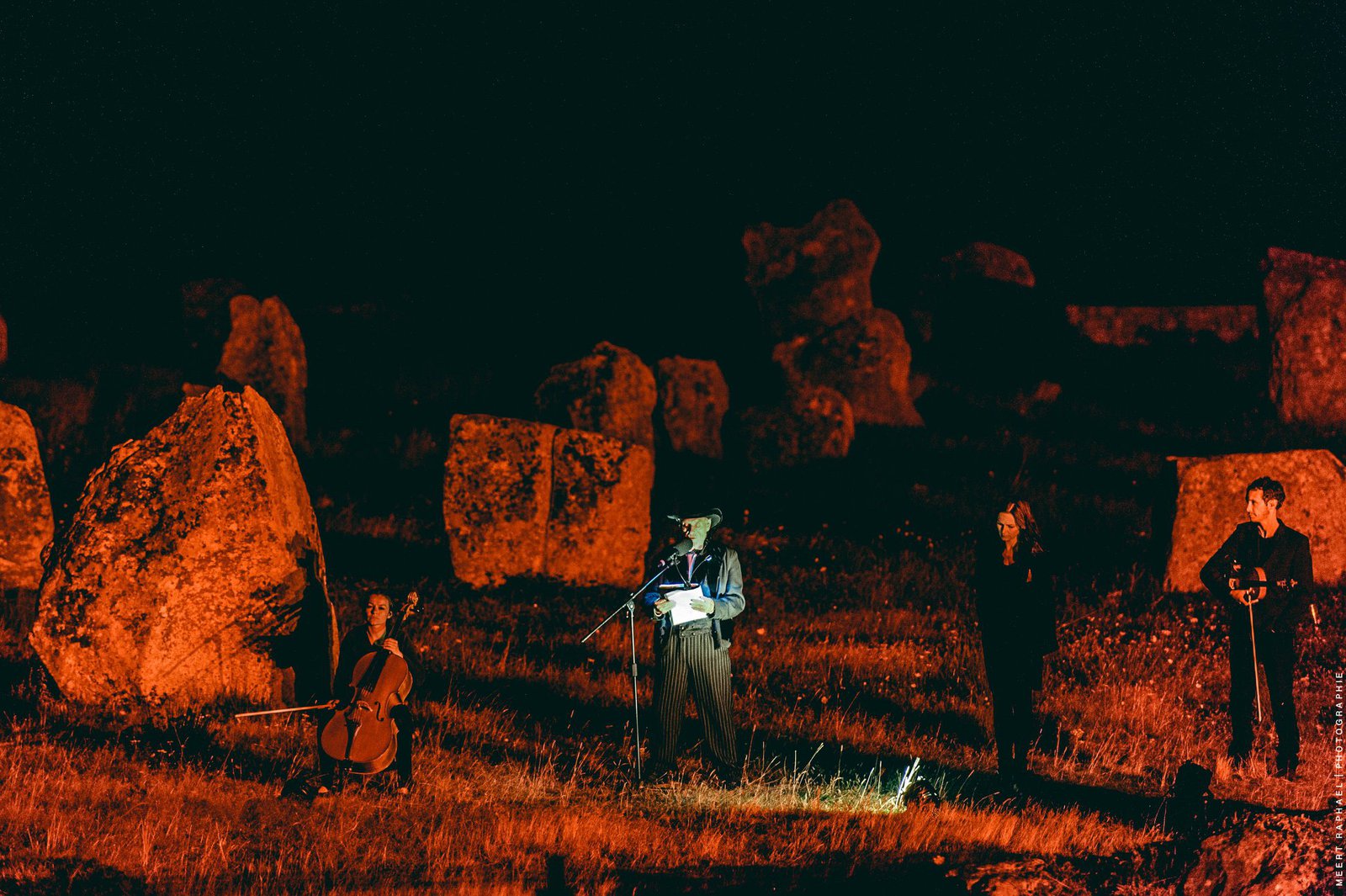
Skedanoz 2019, Carnac (56) – Photo credit: Raphaël Meert
YOU’VE NOW TURNED TO RESEARCH. WHY THIS CHOICE? WHAT DOES IT INVOLVE? WHAT PROJECTS ARE YOU WORKING ON?
Let’s just say that it was more research that turned its attention to me, thanks to a proposal from my former teacher Laurent Lescop, who is now my thesis supervisor. It was a fantastic opportunity: I was looking for a way to advance the theoretical approach to my work, while developing technological case studies in the field (I’m thinking here of the Interactive Data Light project). The thesis, carried out under a Contrat Industriel de Formation par la Recherche (CIFRE), enabled the two worlds – academic and operational – to meet.
I developed a research project entitled Pédagogie de la sobriété lumineuse (Pedagogy of light sobriety), which examines the methods and tools used to design current urban night-time environments and opens up new avenues, both methodological and technical, on the subject of the individual and societal relationship with darkness. I worked closely with the Public Lighting Department of Nantes Métropole, which was my employer under the CIFRE. Together we produced the SCAL: Schéma de Cohérence d’Aménagement Lumière. The theoretical work that I undertook consisted of a participatory methodology for evaluating and designing urban night-time environments, using digital tools for surveying, representing and analysing the nocturnal components of public space.
I finished the thesis at the end of 2020 and I’m now working on two concrete subjects: implementing the methods and tools initiated in the thesis in real urban situations in other French cities, and adapting them to rural environments, particularly in the Regional Nature Parks of the Massif Central.
WHAT IS IT ABOUT LIGHT THAT ATTRACTS YOU? and why urban lighting in particular?
When it comes to light, I’m more interested in darkness. The most important part of my work consists of distributing as little light as possible and trying to reveal the positive virtues of darkness. In short, to change the paradigm of artificial daylight that is commonly accepted today. If we go back to today’s principles of reality, it is certainly not a question of turning off all the lights in towns and villages, but of thinking about contextualising and localising darkness in space and time.
This work has several beneficial aspects: it contributes to the preservation of energy and biodiversity, and questions our individual and societal relationship with darkness, which has been put at a distance since the widespread deployment of public lighting in the 20th century, and the consequent disappearance of darkness and the benefits we could derive from it.
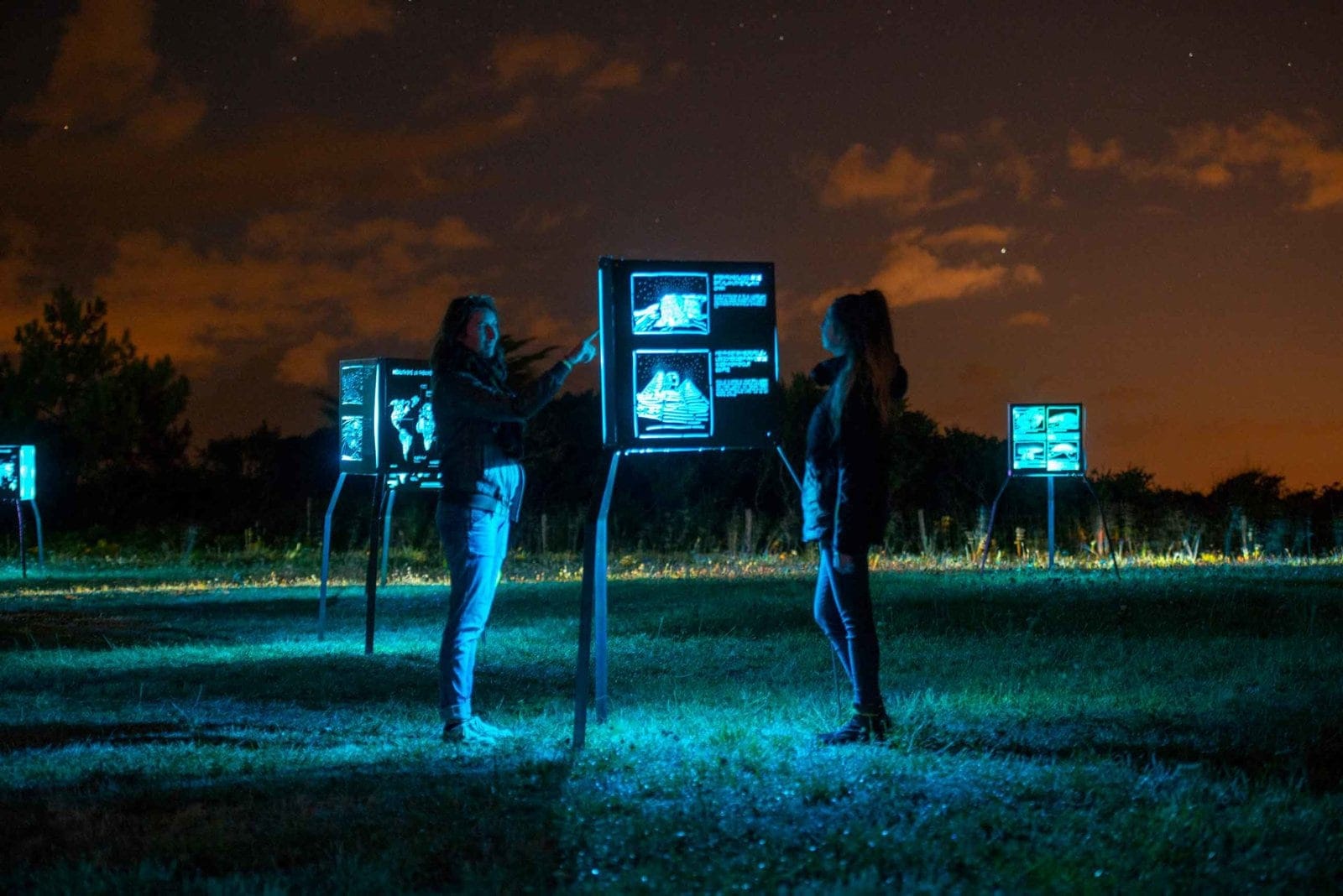
Skedanoz 2018, Arzon (56) – Photo credit: Julien Danielo
CAN YOU TELL US ABOUT THE NIGHT OBSERVATORY YOU FOUNDED? ITS MISSIONS, OBJECTIVES, ETC.
The Observatoire de la nuit is a company that was set up when I finished my thesis. It has several objectives: to respond to requests for interior and exterior architectural illuminations, both permanent and ephemeral; to take part in urban planning phases with a nocturnal dimension and, if possible, in a participatory way; and finally, to run conferences and educational workshops for the general public.
I work with specific digital tools developed during my research work, which enable me to provide new and useful survey, analysis and representation services to the public and private project owners with whom I work. The main mission of L’Observatoire de la nuit is, as a logical extension of my research work, to contribute to lighting sobriety, this time in the context of concrete development projects and programmes.
YOU’RE VERY ACTIVE, AS YOU’RE ALSO A FREELANCE WRITER. HOW DID YOU GET INTO WRITING? WHAT DOES IT MEAN TO YOU?
Writing is one of my favourite creative activities; I think it gives me a liberating time-space. As far as freelance writing goes, the first steps were taken with Vincent Laganier, the editor-in-chief of the online news platform Light Zoom Lumière.
Following one of his lectures at the Nantes School of Architecture, I volunteered to write the report on his workshop. It was the start of a partnership that has lasted ever since. As I said in my introduction, writing the report gives me a moment away from the design phases of a nocturnal project. It’s a different medium of expression, often linked to current events, and it gives me another opportunity to keep a regular watch on subjects related to my business.
ISN’T IT COMPLICATED TO WEAR SO MANY HATS? ALL THESE DIFFERENT JOBS TO MANAGE?
Let’s just say there’s a certain flexibility required. Some jobs don’t require a lot of time, but immediately, whereas others take up more of my time, but over a longer period. Writing, for example, has very tight deadlines, but a relatively quick turnaround time. Conversely, an urban planning project requires a significant investment, but over several months or even years.

Skedanoz 2015, Carnac (56) – Photo credit: Eric Frotier
WHAT FASCINATES YOU ABOUT YOUR JOB(S)?
There’s the link with darkness. It’s very discreet, but omnipresent. What fascinates me is studying, through the relationship with artificial light, the underlying relationship that individuals, groups and societies have with darkness. Through all the paths we take, we arrive at a form of saturation of nocturnal space by light: saturation that is spatial, temporal, physical and sensitive. From street lighting to our telephones, we are constantly exposed to light sources.
The resulting services provide undeniable forms of comfort, but they also raise questions about their exclusivity: could we get around in anything other than a standard amount of light, or with the help of digital navigation tools? For several decades now, groups and associations have been campaigning to preserve the night sky. Often with the aim of restoring access to the celestial vault. The sometimes very assertive rhetoric comes up against the industrial, political and cultural ecosystem in place: why switch off, when our Western societies have been evolving economically, socially and politically thanks to artificial lighting for many generations?
This brings us back to the question of our relationship with darkness. Reducing forms of lighting means taking on the task of restoring darkness, but to what end? What resources will we find there, what representations does this require us to deconstruct? What fascinates me here is the speed, ease and satisfaction with which the people I meet embark on this process of deconstruction, and question their own relationship with darkness.
IS THERE A PROJECT YOU’RE PARTICULARLY PROUD OF THAT YOU’D LIKE TO SHARE WITH US?
I think it’s more a process than a particular project. It’s the process of contextualising the project and firmly introducing darkness. In all the projects carried out to date by L’Observatoire de la nuit, the essential value is always to gather information about space and time. One example is Skedanoz, the summer night-time show in Carnac. Every year since 2014, priority has been given to the complete renewal of the event: sound atmosphere, lighting atmosphere and, above all, storytelling. What makes Skedanoz unique is first and foremost the menhirs, and then the stories that are told about them, which are rewritten each year to bring new content to the spectators.
The second dimension of L’Observatoire de la nuit is to reduce the amount of artificial lighting to a minimum. I’m thinking, for example, of the illumination of the ramparts of Port-Louis, in Morbihan. We could have done a traditional lighting display, illuminating the ramparts from the back, or even from the front. But our approach is really to produce a unique narrative of the local night-time landscape. So we looked at what the ramparts could both reveal and conceal, and built our narrative around this question of masking and revealing.
By day, the ramparts conceal the beach, Lorient harbour and all the marine and underwater features. These reliefs become the central element of our approach: vernacular and time-tested, we define them as the fundamental elements of the landscape. In collaboration with artist-illustrator Léa Le Thoër, we have created a stunning interpretation of the local seabed map, 80 metres wide and almost 10 metres high. The ramparts, which by day hide the seascape, reveal it at night through the projection of this colossal fresco.
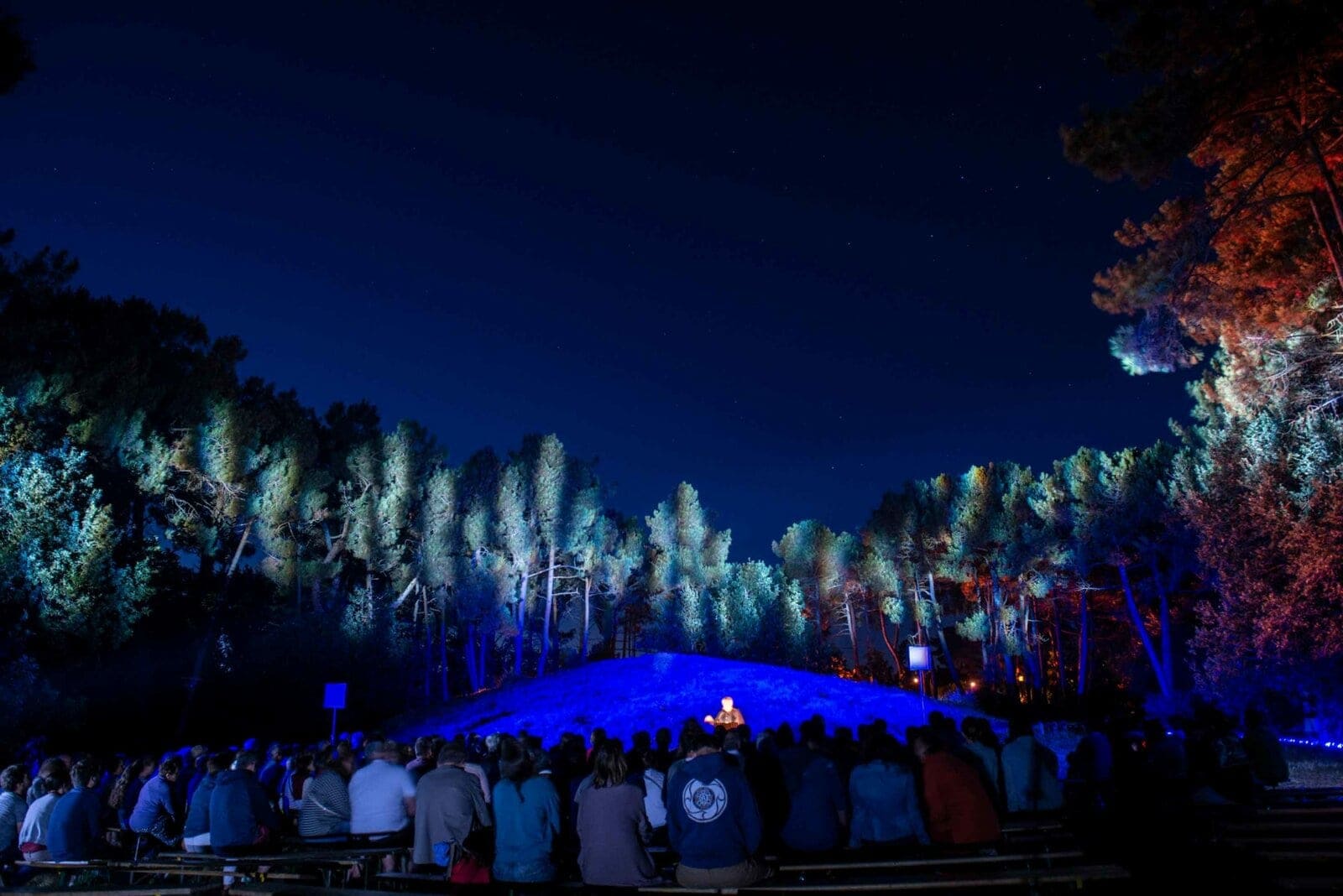
Skedanoz 2018, Le Bono (56) – Photo credit: Julien Danielo
Teaching
FOR 3 YEARS YOU WERE A TEACHER AT ESMA NANTES. WHY AND WHAT MADE YOU DECIDE TO MOVE TO THE OTHER SIDE?
In 2015, I was coming to the end of my architecture studies (ENSA Nantes), and I was looking to balance my professional activities between project work and teaching. At the same time, ESMA was opening its doors in Nantes and setting up its teaching team. It all happened very simply, in just a few exchanges.
There was this desire to pass on, of course. I still look back on my studies at ESMA as the trigger for the rest of my career, which has been resolutely fulfilling professionally. There was, and still is, this desire to share, to pass on, in my own way, the passion that was revealed at that time.
YOU WERE IN THEIR PLACE, student, HOW DID YOU FOCUS YOUR PEDAGOGY?
‘You’re doing the project for you, not for me. Enjoy yourself. You have to pass on your passion. If students take pleasure in carrying out their projects, the result, in terms of both content and form, is more likely to be of high quality.
I don’t believe that this notion of passion should be developed in response to overly strict specifications, but rather by following one’s intuition and experimenting without restraint. Of course, nothing should be free after that. Some of my promos were always calling me ‘more’, because of the method I used to ask them a single question every time: ‘Why? Every time I got a good answer, I asked them to go into even more detail.
The concept of design has developed and branched out so much in its representations that the status of designer sometimes seems to lose its essence. In the teaching approach I propose, becoming a designer means developing a unique, cross-disciplinary and well-argued personal ability to justify and objectify each of your choices. Students have to find and build their own resources that will make them quality professionals, sought after for their identity.
So it’s a question of consolidating a posture and asserting a design process that is characteristic of each individual. I often encourage students to draw on unexpected references, to document their experiments, sketches and volumetric models extensively and, above all, to tell the story of their design process much more than just producing a few final images or computer-generated videos, which tell only a tiny sample of the intelligence and know-how they possess.
IS IT EASIER TO UNDERSTAND STUDENTS’ EXPECTATIONS?
Up to a certain limit perhaps. But the role of the educator, in my view, is first and foremost to capture the essence of each student and to accompany them in their revelation. We need to avoid producing generic, homogenous classes and, on the contrary, encourage atypical backgrounds and experiences.
School is a laboratory and a springboard. It’s a time when you can learn as much as possible about yourself and your future career. At all costs, you have to avoid following a linear path, or you run the risk of encountering less stimulating outlets. Opportunities arise regularly, for everyone. The role of the teacher is to give students the methods, tools and confidence to seize them and build their own pathways.
WHAT HAVE THESE YEARS OF TEACHING BROUGHT YOU?
There’s a fair amount of responsibility involved in the act of teaching. For some students, it’s their first contact with higher education, so you have to offer them a quality experience that can be renewed and revitalised. For the essayist Joseph Joubert, ‘teaching is learning twice’.
Determining an educational programme means ensuring that it is relevant in terms of imparting knowledge, tools and, above all, methods. You have to be constantly renewing yourself, keeping yourself informed, adding to your knowledge and skills to make sure that what you give your students is of high quality, up to date and useful for the rest of their course. In this sense, these years of teaching are also an opportunity to continue to improve once your own academic career is over.
Finally, these years of teaching obviously bring a wealth of formal and informal exchanges, and a broader social base. Some of my students have become close friends, people who are now in work and whose career path brings them shared satisfaction.
ARE YOU THINKING OF RETURNING TO TEACHING?
Absolutely! I’m regularly involved in specific seminars on the subject of the night-time city. The idea now is to offer training courses based on the expertise I developed during my thesis: the teaching of sober lighting.
The very fact that the title of my doctoral thesis includes ‘pedagogy’ underlines the importance I attach to teaching. Ideally, we should now be able to incorporate the notion of nocturnal urban planning into long training courses, so as to train lights designers, or rather dark designers, to use the term put forward by the researcher Nick Dunn, who are capable of mastering the significant cross-disciplinary nature of nocturnal space-time in urban and rural environments.
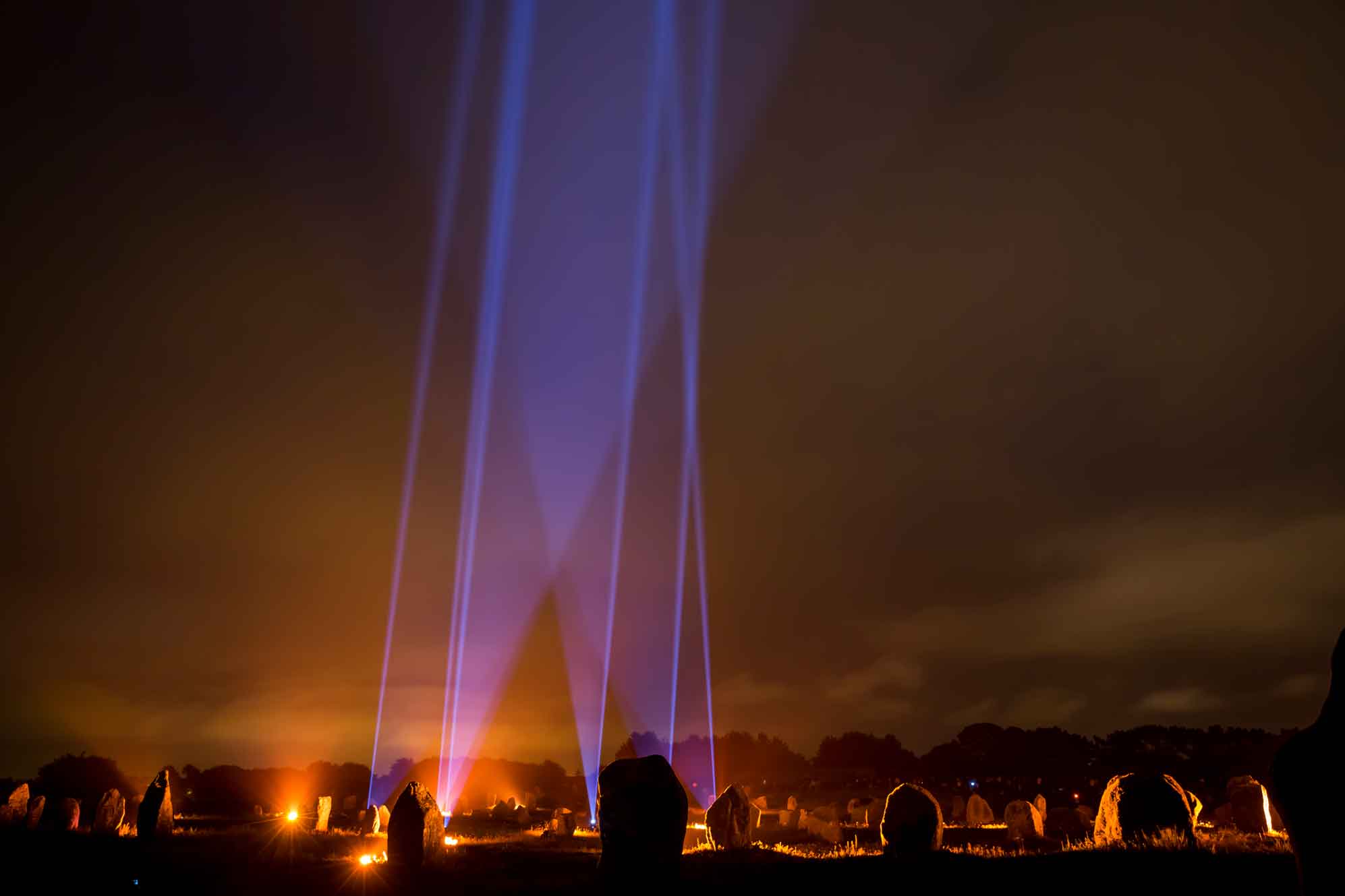
Skedanoz 2016, Carnac (56) – Photo credit: Eric Frotier
In conclusion
ANY FUTURE PROJECTS?
There are projects in several disciplines. For the time being, I’m working on a number of operational projects related to lighting efficiency, in both urban and rural environments, where some local authorities are looking for advice and methodological support to help them make the transition to energy-efficient and environmentally-friendly artificial lighting, both public and private. For example, in conjunction with the IPAMAC association, we are initiating the first stage of a dialogue with the private sector players involved in artificial lighting, right in the heart of the Regional Nature Parks of the Massif Central. This is an unprecedented initiative, which hopes to raise awareness of the concept of lighting sobriety among craftsmen, shopkeepers, industrialists, hoteliers and tourism professionals. To date, this field has been little explored, and I’m delighted to be taking part in these first initiatives, which are essential if we are to achieve a shared objective of sobriety.
At the same time, my research work has had a number of landings: conference cycles with institutions such as the FNCCR and publications in international works such as Transforming Urban Nightlife and the Development of Smart Public Spaces, to be published by IGI Global in May 2021.
Finally, the operational – research – teaching triptych is currently taking shape with the opportunity to support students, on a one-off or long-term basis, in taking account of nocturnal considerations in their studies of design, urban planning and architecture. These first stages of teaching will enable me to study and develop a teaching programme which, I hope, will in a few years’ time make it possible to develop real training in darkness.
DO YOU HAVE ANY ADVICE FOR STUDENTS AND FUTURE STUDENTS?
Yes, perhaps a line of thought: explore your intuitions until you create structured, objective elements. Trust yourself and experiment without restraint.
From my point of view, experimentation is an important key to resolution. You need to take advantage of the time frame in which your studies take place to get to grips with so many different areas, media and exercises. Doing work placements in small, medium and large-scale structures; trying your hand at video, writing, lighting, but also literature, history, sociology and philosophy.
It is through these experiences that a career path and the ability to take the twists and turns take shape. It’s all about experimenting.
